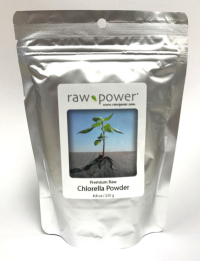
While dry cat foods are very low in water, canned cat foods can provide just as much, if not more water in comparison to a raw cat food diet. Water ContentĬats are meant to get most of their water directly from their food. Here are some factors to consider and how different diets stack up. Many of the benefits that are often ascribed to feeding cats a raw diet could be gained simply by switching to any higher-quality, more biologically appropriate cat food. Nutritionally inadequate cat foods are widely available, and this is true for both processed cat food (canned, dry, etc.) and raw cat food diets. Is Raw Cat Food Better Than Other Cat Food? The pros and cons of BARF and non-BARF raw cat foods are similar. BARF stands for either “biologically appropriate raw foods” or “bones and raw foods.”īARF proponents often highlight the inclusion of raw bone and internal organs in their foods, rather than simply adding raw meat to other ingredients to create a balanced diet. The acronym BARF is sometimes used to describe a version of homemade or commercially available raw cat foods. Are Raw Cat Food Diets the Same as the BARF Diet for Cats? You can be confident that any cat food, raw or not, that conforms to AAFCO standards will at the very least provide your cat with the basics of good feline nutrition. Make sure that you can find an AAFCO statement of nutritional adequacy like one of these on the label of any cat food you might purchase:īrand X Cat Food is formulated to meet the nutritional levels established by the AAFCO Cat Food Nutrient Profiles for adult maintenance, growth and reproduction, or all life stages.Īnimal feeding tests using AAFCO procedures substantiate that Brand X Cat Food provides complete and balanced nutrition for adult maintenance, growth and reproduction, or all life stages. Reputable manufacturers follow the guidelines put forth by the Association of American Feed Control Officials (AAFCO). Commercial Raw Cat FoodĬommercially prepared raw cat foods take a lot of the guesswork out of feeding raw. A paper published in 2014 found that many owners who made their pets’ meals at home eventually strayed from the recipe, which could lead to nutritional deficiencies or excesses over time. To make matters worse, numerous studies have shown that it’s virtually impossible to find nutritionally complete and balanced recipes for homemade pet foods online or in print.Īnd even if you do start with a good recipe, like one designed by a veterinary nutritionist to meet your cat’s particular needs, it can be hard to stick to it. These nutrients are best provided by a combination of meat, internal organs, vitamin and mineral supplements, and other ingredients eaten in just the right amounts and proportions. Meat alone is not enough!Ĭats need the correct balance of amino acids, fats, vitamins, and minerals to thrive. Making your cat’s food at home gives you the most control over what they eat, but it isn’t as easy as you might think. Which option is best? Homemade Raw Cat Food Other options are also available, like premixes of vegetables, vitamins, and minerals that you add raw meat to, or there are ready-made, raw pet diets that can be purchased from local butchers. Others choose commercially available raw cat food diets, which are usually sold as raw frozen or raw freeze-dried formulas. Some pet parents prepare raw foods for their cats at home. Raw cat foods come in many different forms. Certain amino acids, most notably taurine, as well as arachidonic acid, vitamin A, vitamin D, and many B vitamins, must also be present in sufficient amounts. Vitamin and mineral supplements and other ingredients are added to round out the diet and prevent nutritional deficiencies.Ĭats require high dietary protein levels because, unlike most animals, they use protein rather than carbohydrates as their primary energy source. Ground bone is often included as a source of calcium and phosphorus. Raw cat foods accomplish this by placing uncooked meat, fish, and internal organs at the top of their ingredient lists.

Raw cat food is just that-unprocessed food made from raw ingredients.Ĭats are obligate carnivores that have some unique nutritional needs that can be met by eating a diet composed primarily of animal tissue. Let’s take a look at the pros and cons of raw cat food diets so you can make an informed decision when choosing a healthy food for your cat.

The wild ancestors of domestic cats certainly ate raw foods, but does that mean our cats should do the same? Feeding raw foods to cats is controversial.


 0 kommentar(er)
0 kommentar(er)
